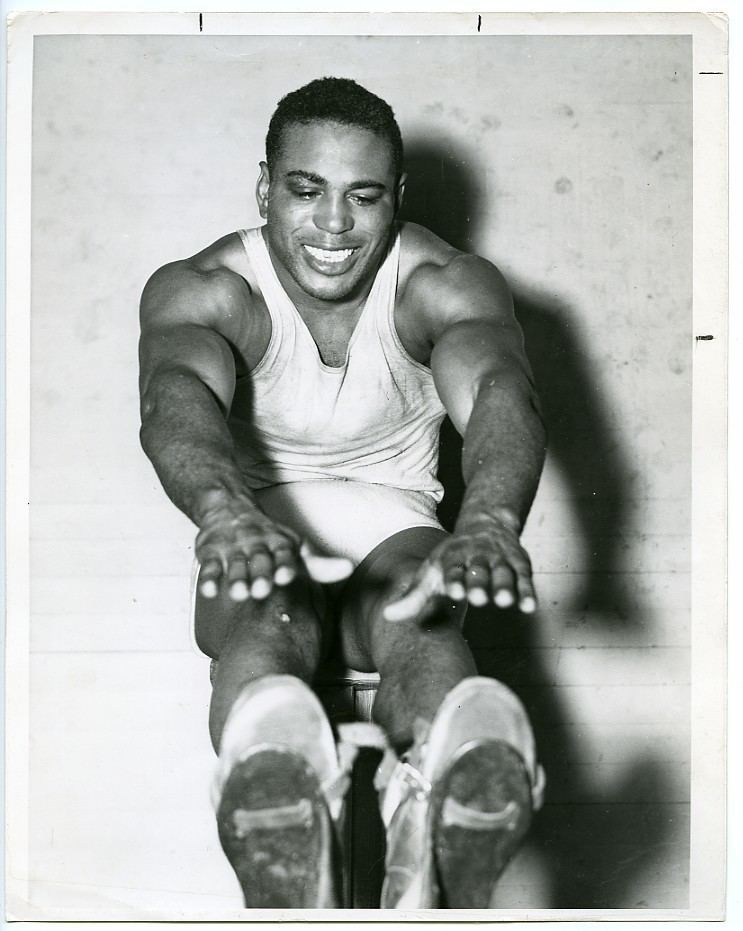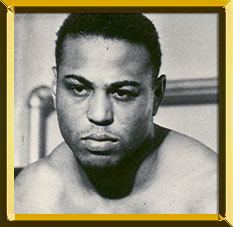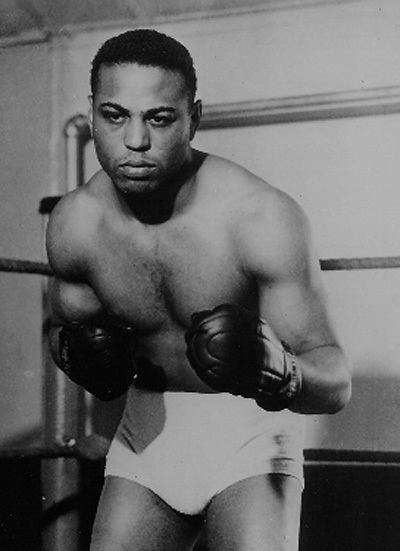Name John Lewis Role Boxer | Height 1.8 m Martial art Boxing | |
 | ||
Similar People Corn Griffin, Art Lasky, Max Baer, Primo Carnera | ||
Joe louis vs john henry lewis
John Henry Lewis (May 1, 1914 – April 18, 1974) was a hall of fame American boxer who was the world light heavyweight boxing champion from 1935 to 1938.
Contents
- Joe louis vs john henry lewis
- Great Moments In Boxing 1316 John Henry Lewis vs Bob Olin
- Early life
- Professional career
- Personal life
- Depictions
- References

Lewis was managed by a gambler and racketeer of the 1930s: Gus Greenlee, a man who became very important to baseball's Negro Leagues as a commissioner and team owner.

Great Moments In Boxing - 13/16 - John Henry Lewis vs. Bob Olin
Early life

Lewis was born in Los Angeles in 1914 and raised in Phoenix, the son of Mattie Drake Foster and John Edward Lewis. Lewis was taught to box at age 4 by his father, a former lightweight who ran a Phoenix gym. Boxing was in the family blood, with John Henry's great-great uncle being the noted bare-knuckle brawler Tom Molineaux.

By the age of 5, Lewis and his brother, Christy, were battling in exhibition "midget boxing" matches. He turned pro at 14, as a welterweight, and gained a reputation for outstanding speed and increasingly superior boxing skills. Three years later, in 1931, Lewis won his first championship, the Arizona middleweight title, and the following year, still in high school, the "Pride of Phoenix" beat future heavyweight champ, "Cinderella Man" James J. Braddock, at San Francisco's Civic Auditorium.
Professional career
Lewis began his professional career in 1928, beating Buster Grant by a four-round decision, in Phoenix. His first 14 fights were in that city, until 1931, when he travelled to Prescott, to fight Sam Terrain on March 11. This proved to be a tragic event, as Terrain died as a consequence of the blows received during Lewis' fourth round knockout win.
Lewis had nine more wins in a row before facing future world Heavyweight champion, The Cinderella Man, James J. Braddock. He defeated Braddock in a 10th-round decision, but, after two more wins, on November 16, 1932, he lost for the first time to fellow world Light Heavyweight champion Maxie Rosenbloom, by a decision in ten.
Lewis defeated four more men before winning three and withdrawing one, before getting a chance at avenging his loss to Rosenbloom in 1933, and he won a 10-round decision in their rematch, and again in their third match.
In 1934, Lewis had 12 bouts, going 9-1-2 in that period. He tried to win the Pacific Coast Light Heavyweight title, drawing with Young Firpo in ten rounds, and he lost in a rematch with Braddock, by decision.
In 1935, Lewis won nine bouts in a row, including one by decision over World Light Heavyweight Champion Bob Olin. Ironically, after he lost two bouts in a row, he was given a chance at the world's Light Heavyweight championship by Olin. On Halloween night of that year, in St. Louis, Lewis became the world's Light Heavyweight champion by outpointing Olin over 15 rounds.
In his next fight, he lost to Rosenbloom in a 10-round, non-title bout by decision.
In 1936, Lewis had 20 fights, going 18-1-1 that year, but only two of those were world championship bouts. He retained his belt against Jock McAvoy and Len Harvey, the latter of which was defeated at London. Lewis won both title defenses by decision in 15 rounds.
1937 was another busy year for the world's Light Heavyweight champion, with 20 more fights and a record of 18-2 that year. Standing out that year were his two fights against Al Ettore, of which in the first, fought over ten rounds, Ettore was declared the winner but the Pennsylvania boxing commission changed the official decision to a draw, and in the second, he beat Ettore by a decision in 15, following with his eight-round knockout of Olin to defend the title, and his non-title win over Johnny Risko.
In 1938, he fought 12 times, going undefeated, retaining the title against Emilio Martinez by a knockout in round four, and against Al Gainer, by decision in 15.
Lewis tried, in 1939, to become the first Light Heavyweight champion in boxing history to go up in weight and conquer the world's Heavyweight championship. On January 25, he was faced with world Heavyweight Champion Joe Louis, who knocked him out in the first round in New York. This would turn out to be Lewis' last fight, even through he didn't know it at the time.
His next fight would have been a rematch with Len Harvey in London, but Lewis did not pass the medical tests before the fight, and the fight was cancelled, so in June of that year, he announced his retirement.
Lewis had a record of 103 wins, 9 losses and 6 draws, with 60 wins by knockout. His 60 knockout wins makes him a member of boxing's exclusive club of winners by knockout 50 or more times.
Lewis is a member of the International Boxing Hall of Fame.
Personal life
Lewis had two brothers who boxed professionally; Christy and Paul. Christy, his older brother by less than a year, was a club fighter, often appearing on his brother's undercards. Paul was a Middleweight who was a main event attraction in Northern California during the mid-1940s, primarily in Oakland.
Lewis died in Berkeley, California, in 1974 at the age of 59, after suffering from emphysema and Parkinson's disease. He was inducted into the International Boxing Hall of Fame in 1994. Lewis' brother, Nathaniel Christy Lewis, was the biological maternal grandfather of rapper LL Cool J.
Depictions
Lewis is portrayed by Troy Amos-Ross in the 2005 Braddock biopic Cinderella Man.
